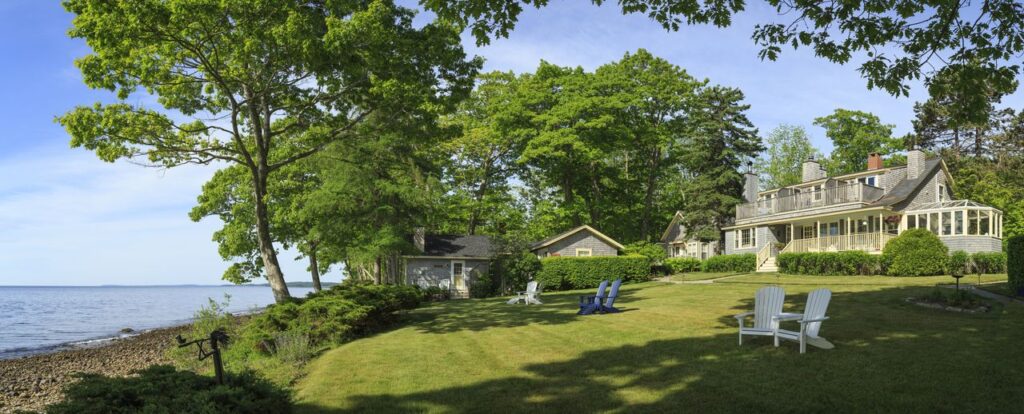
Panoramic view of grand home on the Atlantic Ocean, Inn at Sunrise Point, near Camden, Maine, USA
A retiree facing a decision about how to manage a $45,000 required minimum distribution (RMD) from their retirement account is weighing the option of using the funds to pay down a $360,000 mortgage on a vacation home valued at $1.2 million. This choice raises important questions about liquidity, financial stability, and long-term wealth management.
Understanding the Implications of Paying Down a Mortgage
Carrying a mortgage can have both advantages and disadvantages. For retirees, the decision to pay off a mortgage using a lump sum can impact financial flexibility. Financial experts suggest that if the mortgage interest rate is relatively low, it might be more beneficial to invest the RMD elsewhere for a potentially higher return. According to Drew Lunt, founder and adviser at Scratch Capital, when clients face these decisions, they often prioritize options that enhance their financial resilience in uncertain times.
On the other hand, having a mortgage represents a form of debt, which some retirees might find uncomfortable. Paying off the mortgage could provide peace of mind and reduce the financial burden of monthly payments. However, Lunt emphasizes the importance of considering liquidity: “Investing the after-tax RMD or using it for QCDs can preserve liquidity and allow total-return compounding to do the heavy lifting.”
Evaluating Financial Options
Before making a decision, it is essential to assess the mortgage interest rate compared to potential returns from other investments. Financial planner Matt Hylland from Arnold and Mote Wealth Management notes that while using an RMD to pay down the mortgage can yield interest savings, retirees must ensure they maintain adequate liquid assets for emergencies or unexpected expenses.
Hyland advises that building more equity in a home can be advantageous, but accessing that equity in the future could be costly, especially given the current high-interest borrowing environment. He recommends evaluating safer investment options, such as money markets and Treasury bills, to determine if the returns might exceed the mortgage rate.
Lunt adds that increasing equity in a vacation home, which is already an illiquid asset, may not always enhance financial flexibility. “A vacation home is already an illiquid, concentrated asset. Adding more equity may feel productive, but it can reduce resilience when unexpected repairs, rising insurance costs, or life changes inevitably show up,” he explains.
Retirees who don’t require their RMD for immediate expenses have alternative avenues to consider. Lunt suggests exploring qualified charitable distributions (QCDs) to help lower tax burdens or investing the RMD in a taxable brokerage account for income generation. Another option to consider, according to Hylland, is using the RMD to cover taxes on a Roth conversion, thereby reducing future RMDs. This strategy could save on taxes for the remainder of the retiree’s life while allowing for tax-free growth in a Roth IRA.
Ultimately, the decision should reflect what provides the most peace of mind. A thorough analysis of personal liquidity is advisable, whether conducted independently or with a financial adviser. As Lunt points out, “Paying down the loan can legitimately reduce financial stress and create more stability.” Conversely, if tying more funds into an illiquid asset could increase financial vulnerability, it might not be the best course of action.
In conclusion, retirees are encouraged to think beyond immediate financial calculations and consider the broader implications of their decisions. The right choice may involve balancing short-term needs with long-term goals, ensuring adaptability as life circumstances change.







